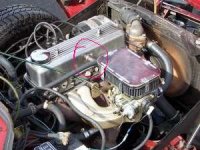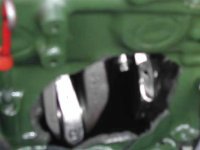budk1953
Jedi Warrior
Offline
I'm leaning over the fence with this since it involves a triumph engine. There was discussion in the spridget forum regarding performance upgrades and crankcase breathers so I'll just copy my post:
I've been reading these posts with great interest as my 79 midget seems to leak oil only when on the road (I can let it run for hours at an idle w/no leaks). I'm planning on changing suspect gaskets soon and this seems like a good idea. I've got a Weber and aluminum valve cover w/plugged holes. I know one hose should be installed in the valve cover but where should the second hose go? I've found a source with a good selection of crankcase breather filters (clamp, plug-in, threaded connection). Any suggestions?
I've been reading these posts with great interest as my 79 midget seems to leak oil only when on the road (I can let it run for hours at an idle w/no leaks). I'm planning on changing suspect gaskets soon and this seems like a good idea. I've got a Weber and aluminum valve cover w/plugged holes. I know one hose should be installed in the valve cover but where should the second hose go? I've found a source with a good selection of crankcase breather filters (clamp, plug-in, threaded connection). Any suggestions?

 Hi Guest!
Hi Guest!

 smilie in place of the real @
smilie in place of the real @
 Pretty Please - add it to our Events forum(s) and add to the calendar! >>
Pretty Please - add it to our Events forum(s) and add to the calendar! >> 

